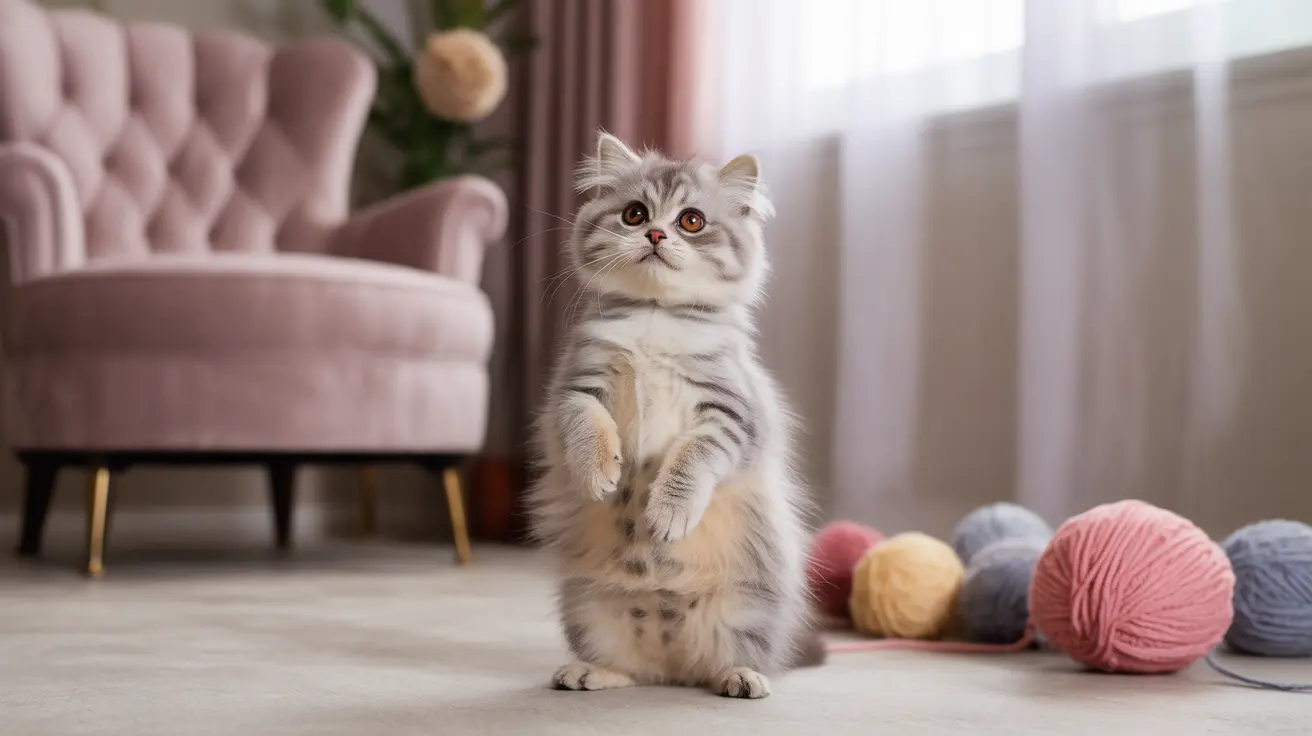Have you ever witnessed your feline friend suddenly rise up on their hind legs, looking remarkably like a tiny furry person? This behavior, often called "meerkating," is both adorable and intriguing. Understanding why cats stand on their hind legs can provide valuable insights into your pet's health, emotions, and needs.
From seeking attention to expressing curiosity or even dealing with medical conditions, there are several reasons why cats might adopt this distinctive posture. Let's explore the fascinating science and behavior behind this unique feline characteristic.
The Natural Instincts Behind Standing Behavior
When cats stand on their hind legs, they're often tapping into deep-rooted survival instincts. This position allows them to appear larger and more intimidating to potential threats, a behavior inherited from their wild ancestors. It's also an excellent vantage point for surveying their environment and spotting potential prey or danger.
Many cats use this posture during play and social interactions, demonstrating how an originally defensive behavior has evolved to serve multiple purposes in domestic settings.
Common Reasons for Bipedal Behavior
Attention and Affection Seeking
One of the most common reasons cats stand on their hind legs is to get their human's attention. This learned behavior often develops when cats realize it's an effective way to reach treats, earn pets, or initiate play. Many cats will combine this stance with gentle pawing or reaching gestures, making it hard for their owners to resist.
Curiosity and Environmental Investigation
Cats are naturally curious creatures, and standing up gives them a better view of interesting objects or activities above their normal eye level. This behavior is particularly common in indoor cats who want to investigate countertops, shelves, or window sills.
Medical Considerations and Warning Signs
While standing on hind legs is usually normal behavior, sometimes it can indicate underlying health issues. Diabetic neuropathy, radial agenesis, or calcaneal tendon disorders might cause cats to shift weight to their back legs more frequently than usual.
If you notice your cat standing on their hind legs more often than normal, especially if accompanied by other unusual symptoms, it's important to consult with a veterinarian to rule out potential health concerns.
Training and Enrichment Opportunities
Many cats naturally enjoy standing on their hind legs, and this behavior can be incorporated into enrichment activities. Providing vertical spaces, interactive toys, and appropriate rewards can help channel this natural tendency into healthy play and exercise.
However, it's important never to force this behavior or encourage it excessively, as prolonged standing isn't natural for cats and could strain their muscles.
Frequently Asked Questions
Why does my cat stand on its hind legs when it wants attention or affection?
Cats often stand on their hind legs to get closer to their owners' faces and hands, making it easier to receive attention and pets. This behavior is learned through positive reinforcement when they discover it successfully gains human attention.
Can standing on hind legs be a sign of health problems like diabetic neuropathy or tendon injuries in cats?
Yes, while occasional standing is normal, excessive or unusual standing on hind legs can indicate health issues like diabetic neuropathy, tendon injuries, or congenital conditions. Consult a veterinarian if you notice changes in this behavior or other concerning symptoms.
What does it mean when a cat stands tall to appear bigger—is it a defense or survival behavior?
Standing tall is indeed a defensive behavior cats use to appear larger and more intimidating to potential threats. This survival instinct helps them ward off predators or establish dominance in territorial disputes.
How can I tell if my cat's habit of standing on hind legs is normal or a cause for veterinary concern?
Normal standing behavior is usually brief, purposeful (like reaching for treats or toys), and accompanied by normal movement and behavior. Signs for concern include frequent or prolonged standing, difficulty walking normally, or associated symptoms like pain or weakness.
What can I do to encourage safe and playful hind-leg standing and enrichment for my cat at home?
Provide vertical scratching posts, cat trees, and interactive toys at varying heights to naturally encourage this behavior. Use positive reinforcement during play, but avoid forcing the position or creating situations where your cat might fall or strain themselves.
Conclusion
Whether your cat stands on their hind legs to greet you, investigate something interesting, or simply to reach their favorite treats, this behavior offers a fascinating glimpse into feline psychology and physiology. By understanding the various reasons behind this endearing pose, you can better interpret your cat's needs and ensure their health and happiness.






